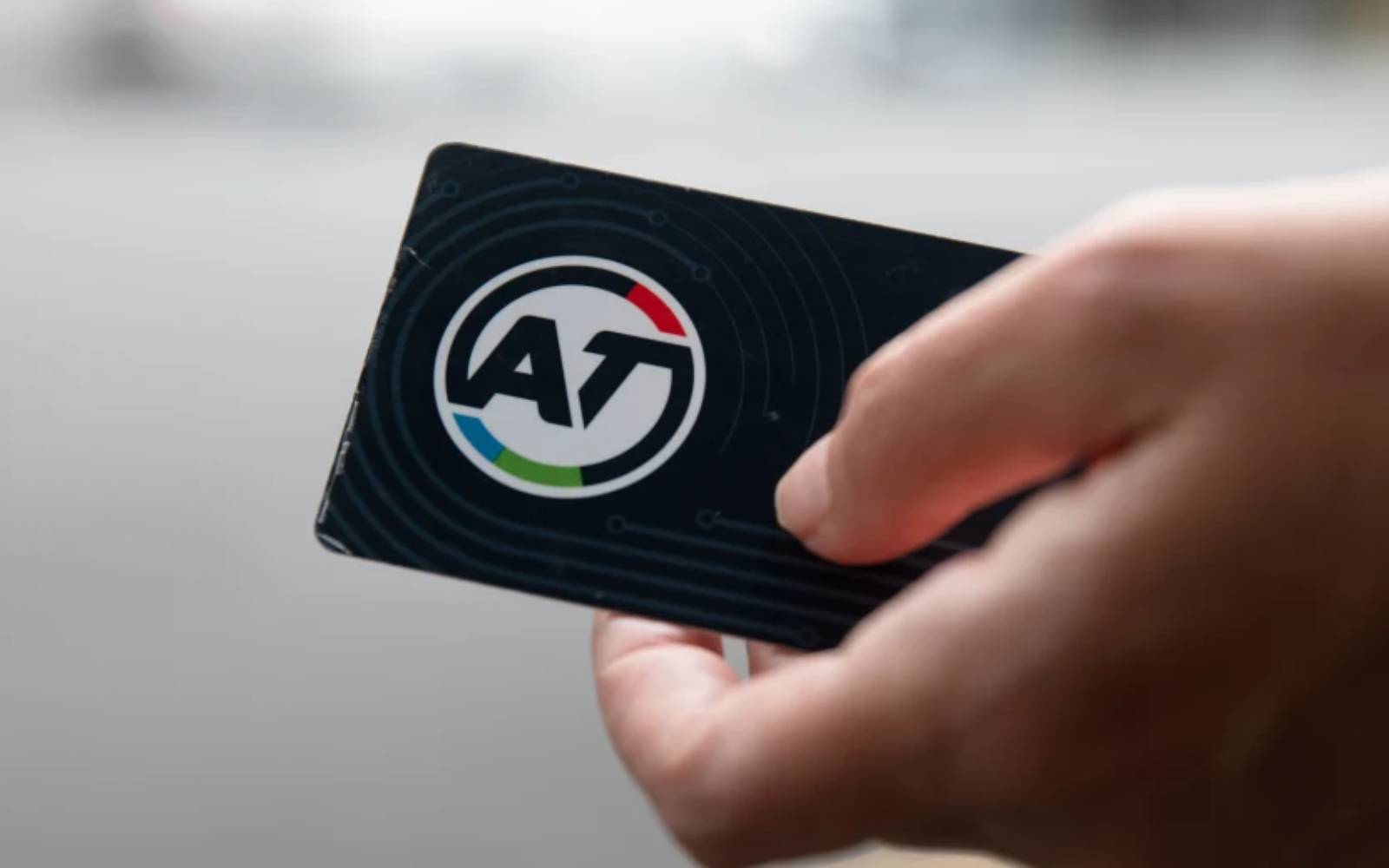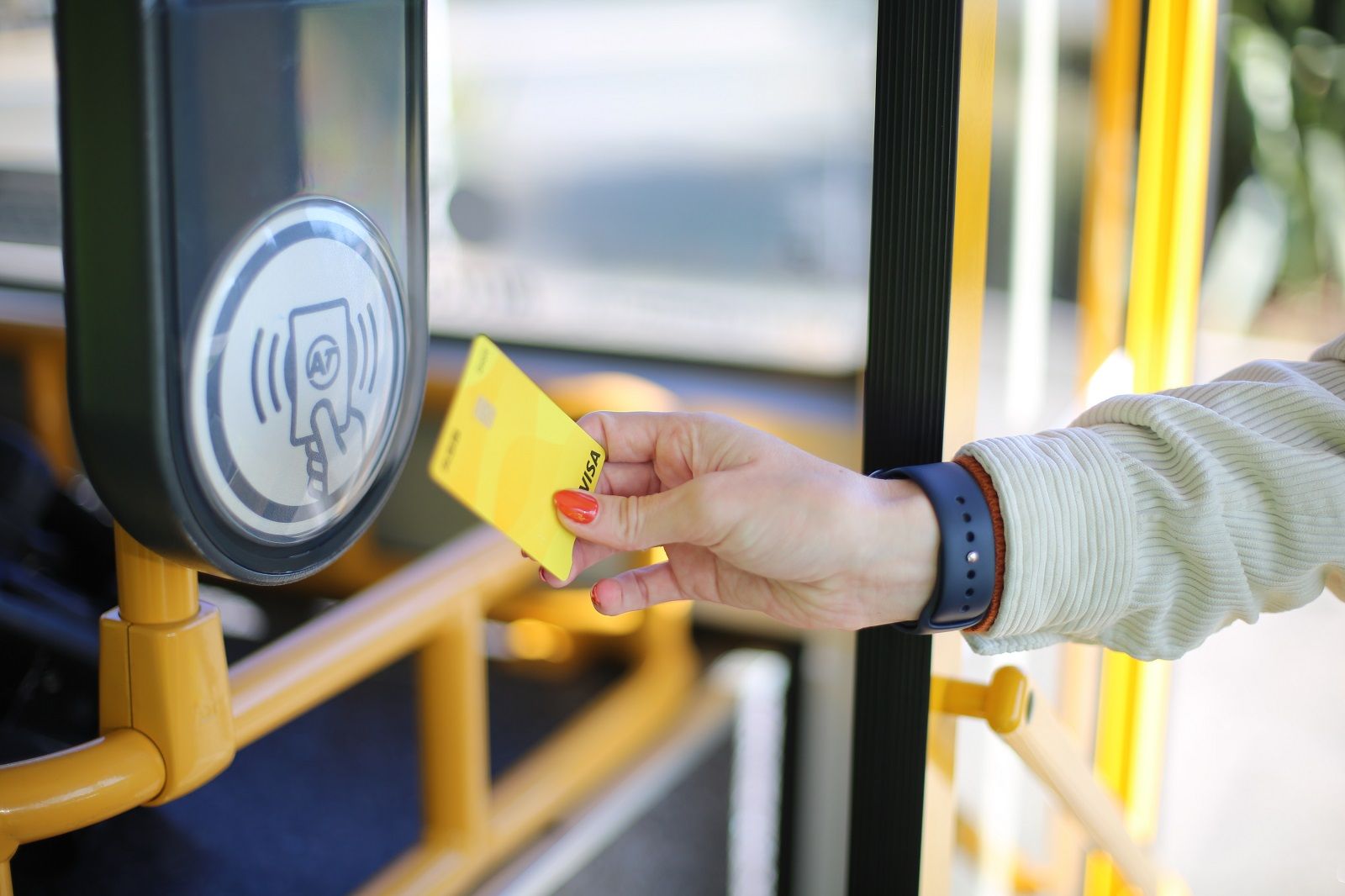

You can now use a credit card or phone to make a contactless payment for Auckland buses, trains and ferries.
Photo/RNZ(single use only)
Auckland Transport’s payment plan divides users
Users say the contactless system fails to consider the budget-conscious public.
Some Auckland public transport users say they will keep their AT HOP cards to retain the discounted fares.
Over the weekend, Auckland Transport ushered in a new era of convenience with the introduction of contactless payments.
Commuters can now use any paywave-enabled device, such as a card or phone, to tag on or off. However, these payments will incur the full adult fare.
Unfortunately, this change will not benefit everyone, as concession prices and the $50 seven-day fare cap are excluded.
User reviews
Jakub Přikryl, 25, who recently arrived from the Czech Republic, believes the new system is a great idea because many people use mobile devices or cards daily.
“I arrived three days ago and didn’t know how to pay. I’d really appreciate being able to pay through mobile.
“It’s much easier because I don’t carry cash. I’ll definitely use it.”
However, some users are concerned about losing concession discounts.
Reed, 19, a regular public transport user, plans to keep using his HOP card despite the convenience of the new system.
“Having a HOP card is better for compartmentalising funds, so I’ll stick with it.”

Commuters who want to keep their discounted or concession fares will need to use an AT HOP card. Photo/LDR (single use only)
Thomas Michael Daly, another frequent user, expressed disappointment: “I was excited about the convenience, but I wouldn’t get the discount. I rely on that... Yeah, kind of disappointed.”
Christina, a minimum-wage worker, commented, “It’s accessible but more expensive. It doesn’t make sense. You want to give the cheaper option, especially with the cost of living. I’m getting minimum wage.”
She will continue using her HOP card because it’s cheaper.
University students Rosie and Honour expressed frustration at the new system's inability to use their student concessions. Honour says, “It’s convenient, but the full fare is hard for some parents to afford.”
David, who uses a gold card, feels the new system is not ideal for older people: “I prefer the old card. The new contactless payment is good for those who are tech-savvy, but it’s not ideal for older people.”
Despite the drawbacks, many users acknowledge the progress the change represents.
Carter, 17, from Christchurch, says, “It’s way easier, 100 times easier.”
Nevertheless, his mother, Theresa Pearson, pointed out a downside: “It’s easier with contactless payment. But that’s a disadvantage for people who can’t get a concession or cheaper rates.”

Local politicians share their thoughts about Auckland Transport introducing contactless payments as an option for public transport users. Photo / Auckland Council/ LinkedIn
Local politicians weigh in
Māngere-Ōtāhuhu Local Board Chair Tauanu’u Nick Bakulich said the change would make public transport much more accessible, which would benefit seniors and Pacific communities.
“For seniors 65+, it's still free with their gold card - buses, trains, ferries -it’s all free for them. For Pacific people, you don’t have to buy a $10 HOP card before you can start loading it,” he said.
Tauanu’u, who frequently uses the train for work meetings, added: “For those who aren't regular users, they won’t have to deal with the inconvenience of buying a HOP card. They can just rock up and use their debit card.”
Ōtara-Papatoetoe Local Board Chair Apulu Reece Autagavaia noted that while the system removes the hassle of topping up HOP cards, it has drawbacks as contactless payments don’t offer concession discounts.
“The next step is cheaper fares, which would really help families who rely on public transport for schooling and work. This programme doesn’t fully benefit those people yet, but hopefully, technology will allow for concessions in the future.”
He added that the local board has advocated for free public transport, eliminating the need for any card.

Photo / Auckland Council
Manurewa-Papakura Ward Councillor Daniel Newman emphasised the importance of providing people with choices, including contactless payment options.
However, he says, "My strong preference is that customers use their AT HOP wherever they can, as it provides the means to enjoy any fare concessions that may apply to the customer."
Maungakiekie-Tāmaki Ward Councillor Josephine Bartley acknowledged the convenience but raised her concerns about the costs.
“I think it's good for people who don't have HOP cards, but it's a very expensive system to put in place. I think of local boards that tried to push HOP cards, and now it seems they didn't need to.”
Users paying with devices or debit cards will be charged the full adult fare until the National Ticketing Solution is in place in 2026.
LDR is local body journalism co-funded by RNZ and NZ On Air.



